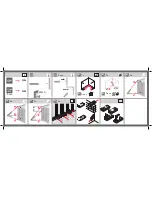
Installing the 40T
5.
Alternatively,
if time allows and granite is not available, prepare a concrete
mix with sand and fine grit, and pour it into the hole. Agitate (“puddle”) it
whilst still liquid, to allow it to flow out and form a level surface, then leave to
set. Follow on from step 7.
Puddled concrete produces a fine-textured, level floor for siting the
seismometer. However, once set hard, the concrete does not have the best
possible coupling to the subsoil or bedrock, which has some leeway to shift or
settle beneath it.
6.
Alternatively,
for the most rapid installation, place loose soil over the bottom
of the pit, and compact it with a flat stone. Place the seismometer on top of
this stone. This method emulates that in step 3, but can be performed on-site
with no additional equipment.
7. Set up the instrument as described in
Section 3.1, “Installing in vaults”
(steps
4 to 9).
8. The instrument must now be shielded from air currents and temperature
fluctuations. This is best done by covering it with a thermal shield.
An open-sided box of 5 cm expanded polystyrene slabs is recommended. If
using a seismic plinth on sand (from steps 3–4 or 5), ensure that the box is
firmly placed in the sand, without touching the plinth at any point. In other
installations, tape the box down to the surface to exclude draughts.
9.
Alternatively,
if a box is not available, cover the instrument with fine sand up
to the top.
The sand insulates the instrument and protects it from thermal fluctuations,
as well as minimizing unwanted vibration.
10. Ensure that the sensor cable is loose and that it exits the seismometer
enclosure at the base of the instrument. This will prevent vibrations from
being inadvertently transmitted along the cable.
11. Cover the pit with a wooden lid, and back-fill with fresh turf.
4.3.1
Other installation methods
The recommended installation methods have been extensively tested in a wide
range of situations. However, past practice in seismometer installation has varied
widely.
22
Issue F - June 2019
















































